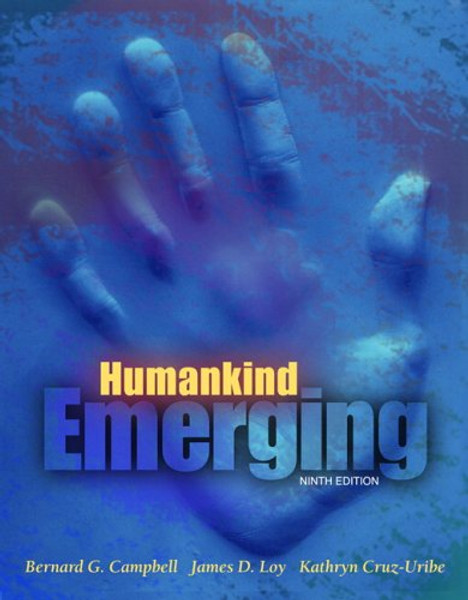Product Overview
The most comprehensive, up-to-date, and readable introduction to the field of human evolution.
The ninth edition of Humankind Emerging tells the story of how, when, and why the human lineage developed from ape-grade ancestors. In Part I, Chapters 1 and 2 present a short history of the rise of evolutionary theory and the science of genetics, followed by a description of the various mechanisms that produce evolutionary change. In Part II, Chapters 3-5put humans in their proper context among the primates, first discussing those aspects of modern primate behavior that help to interpret human prehistory and then describing the fossil evidence for the early stages of primate evolution. In Part III,Chapters 6 and 7 describe the australopithsmembers of the subtribe Australopithecina and the first representatives of humans zoological tribe, Hominini. Part IV consists of nine chapters that detail the anatomical, cognitive, and behavioral evolution of the genus Homo and its various premodern and modern species. Here the second hominin subdivisionthe subtribe Homininais described and interpreted. The book ends with Part V in which Chapter 17 discusses modern human diversity, the question of biological races of humans, and the challenges facing humanity in the future.
The current edition provides an absolutely up-to-date survey of the hominin fossil species including descriptions of the oldest members of the tribeSahelanthropus, Orrorin, and Ardipithecus kadabba (Chapters 6 and 7)as well as the recently discovered dwarfed species from Indonesia, Homo floresiensis (expanded post-script in Chapter 15). Updates of the taxonomic scheme for the human lineage bring the text into agreement with current paleoanthropological usage. Australopiths are assigned to the subtribe Australopithecina, species of the genus Homo are placed in the subtribe Hominina, and the two subtribes are combined to form the tribe Hominini. Great apes and hominins now are combined in the family Hominidae. The newest edition also expands the fossil and behavioral descriptions of Homo heidelbergensis and identifies this species as the first hominin type to show the hunting lifestyle. Speculations about societal changes that may have accompanied the beginning of the hunting way of life (Chapter 12) are updated. The latest studies of the neural regions and connections responsible for human speech and language (Chapter 13) are described as well. In-text citations for all source materials are provides as well as a full bibliographyfeatures that allow for in-depth study. Over 30% of the references are from 2000 or later.









